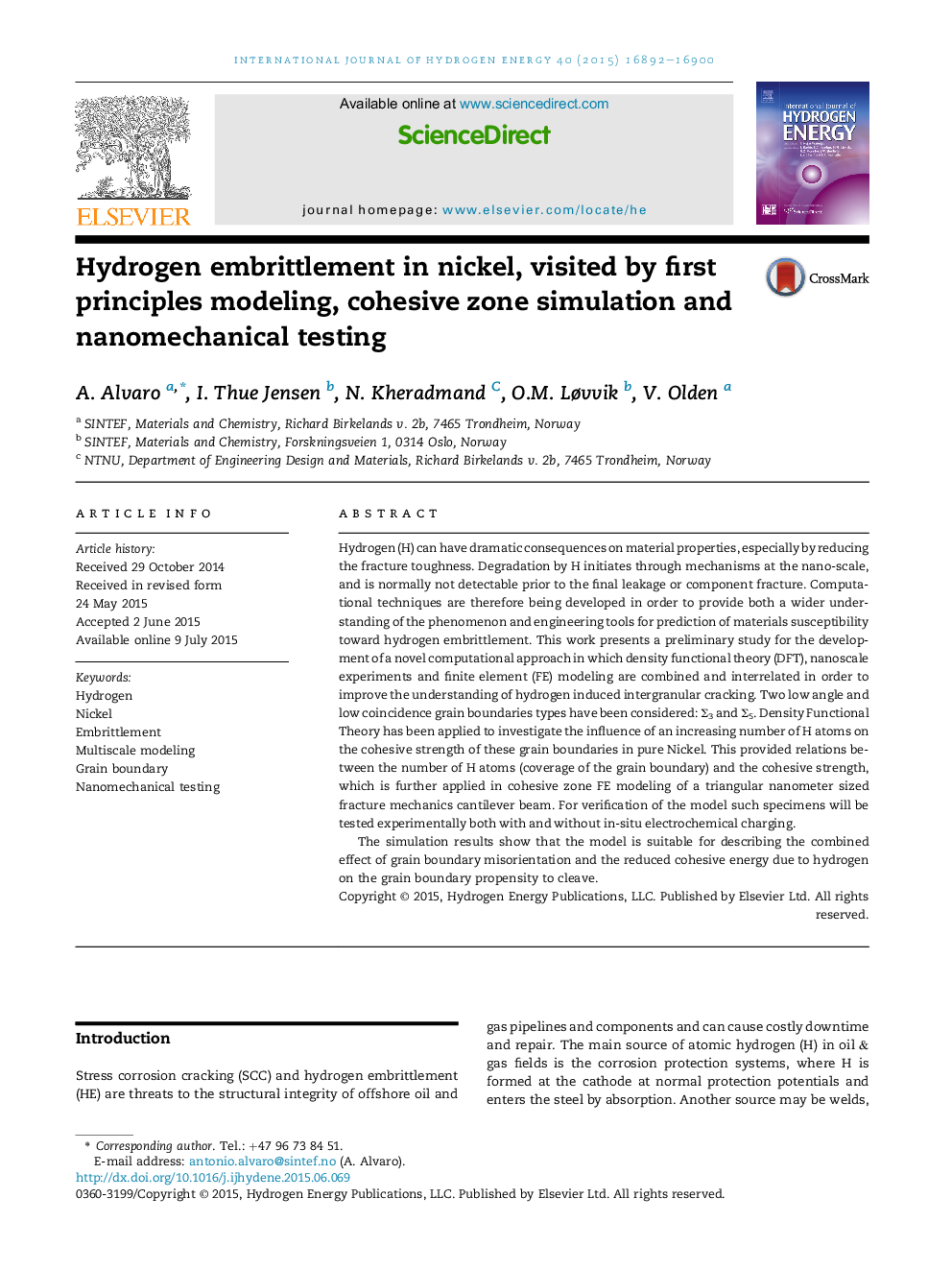| کد مقاله | کد نشریه | سال انتشار | مقاله انگلیسی | نسخه تمام متن |
|---|---|---|---|---|
| 1278386 | 1497426 | 2015 | 9 صفحه PDF | دانلود رایگان |
• A multiscale modelling approach is developed to address H-induced GB embrittlement.
• Hydrogen fracture energy variations has been obtained through atomistic simulations.
• Atomistic simulations results has been input for finite element cohesive simulations.
• Σ3 and Σ5 low angle GBs have been chosen for FE simulations of nanosize Nickel beam.
• FE results show a clear combined influence of grain misorientation and hydrogen.
Hydrogen (H) can have dramatic consequences on material properties, especially by reducing the fracture toughness. Degradation by H initiates through mechanisms at the nano-scale, and is normally not detectable prior to the final leakage or component fracture. Computational techniques are therefore being developed in order to provide both a wider understanding of the phenomenon and engineering tools for prediction of materials susceptibility toward hydrogen embrittlement. This work presents a preliminary study for the development of a novel computational approach in which density functional theory (DFT), nanoscale experiments and finite element (FE) modeling are combined and interrelated in order to improve the understanding of hydrogen induced intergranular cracking. Two low angle and low coincidence grain boundaries types have been considered: Σ3 and Σ5. Density Functional Theory has been applied to investigate the influence of an increasing number of H atoms on the cohesive strength of these grain boundaries in pure Nickel. This provided relations between the number of H atoms (coverage of the grain boundary) and the cohesive strength, which is further applied in cohesive zone FE modeling of a triangular nanometer sized fracture mechanics cantilever beam. For verification of the model such specimens will be tested experimentally both with and without in-situ electrochemical charging.The simulation results show that the model is suitable for describing the combined effect of grain boundary misorientation and the reduced cohesive energy due to hydrogen on the grain boundary propensity to cleave.
Journal: International Journal of Hydrogen Energy - Volume 40, Issue 47, 21 December 2015, Pages 16892–16900
